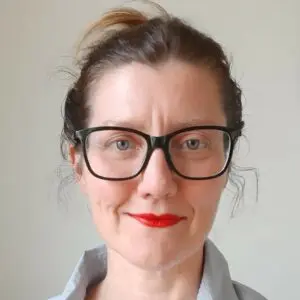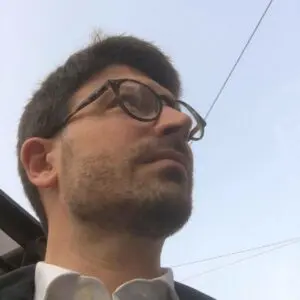Psicodramma Classico – Anno III Volume 3, Ottobre 2001

- Codice: M2637
- Autore
- Giorgio Durante, Letizia Nicolini
- Sommario
-
Gli Autori ripercorrono le tappe più significative della preparazione e del primo anno di vita di un gruppo di psicodramma riservato a pazienti di un Centro di Salute Mentale. Nella prima parte vengono descritte le modalità organizzative della formazione di alcuni Io-ausiliari professionisti preparati e motivati a lavorare insieme ai pazienti. In seguito sono sintetizzati alcuni momenti della vita del gruppo secondo alcuni indicatori significativi (frequenza, atmosfera gruppale, sperimentazione di ruoli, interpretazione di ruoli dati o inventati, scene della vita dei pazienti). Infine sono proposte alcune considerazioni critiche e alcuni spunti di riflessione desunti dall’esperienza svolta che riguardano il ruolo degli Io-ausiliari e quello del direttore. Il PSYCHODRAMA IN A HEALTH MENTAL CENTER The Authors recall the most significant steps in the preparation and in the first year’s activity of a psychodrama group, devised for out-patients of a Mental Health Center. The first section of the article describes the organizational criteria for the training of some professional auxiliary-Egos – how they have been motivated and instructed to work with the patients. Some key events of the group’s life are then summarized, and considered in accordance with some significant indicators (attendance, group interaction, experimentation of roles, performance in assigned and invented roles, and scenes out of the patients’ lives). Finally, critical considerations are suggested concerning the roles of the auxiliary egos and of the director, based on the Authors’ experience.
- Codice
- M2637-1-1
- Acquista Articolo
- Sottotitolo
- Uso di tecniche psicodrammatiche nell'ambito del modello fenomenologico dialettico di personalità
- Autore
- Leni M.F. Verhofstadt-Denève
- Sommario
-
L’articolo presenta il caso di un adolescente vittima di violenza, e violento a sua volta, trattato con tecniche psicodrammatiche, impiegate all’interno della cornice di riferimento della psicoterapia dello sviluppo con approccio esistenziale dialettico. Nell’ambito di tale cornice, si ricorre al modello fenomenologico-dialettico di personalità (modello Fe-Di-P) elaborato dall’Autrice, basato su sei principali interrogativi riguardanti la propria persona e gli altri significativi, che delimitano e configurano il rapporto del soggetto con se stesso e con il mondo esterno. L’articolo illustra come, all’interno di tale modello teoretico, l’azione psicodrammatica si sviluppi attraverso opposizioni dialettiche. TREATMENT OF ADOLESCENTS VICTIM OF VIOLENCE: A CASE PRESENTATION Using psychodramatic techniques in the frame of the fenomenological-dialectic personality model This article presents the case of an adolescent victim of violence, and violent himself, treated with psychodramatic techniques, used inside the frame of the developmental psychotherapy from an existential dialectical point of view. Inside that frame, the therapist applies to the phenomenological-dialectic personality model (Phe-Di-P model), worked out by the Author herself, based on six major questions regarding the Self and the Others which delimit and shape the subject’s relationship with him/herself and with the surrounding world. The article shows how, inside that theoretical model, the psychodramatic action develops through dialectical oppositions.
- Codice
- M2637-1-2
- Acquista Articolo
- Sottotitolo
- Caratteristiche strutturali e psicodinamica del gruppo condotto con metodo psicodrammatico
- Autore
- Andrea Cocchi
- Sommario
-
Avvalendosi della forma dialogica, che gli è cara perché assai psicodrammatica, l’Autore affronta la differenza tra i modelli relazionali intersoggettivo e interdipendente e la loro influenza sull’efficacia e sull’ecologia dei processi di gruppo. Inoltre si esaminano le qualità costitutive del gruppo di psicodramma e le sue caratteristiche peculiari. Infine si accenna all’importanza della semirealtà come strumento di cambiamento intrapsichico e ai fenomeni di co-conscio e co-inconscio all’interno di un gruppo, con particolare riferimento al gruppo di psicodramma. FENOMENOLOGY OF PSYCHODRAMA GROUP Structural characteristics and psychodynamics of the group conducted with psychodramatic methodology Using the psychodramatic dialog format, the Author deals with the difference between the intersubjective and interdependent relationship models and their influence on the effectiveness and ecology of group processes. Furthermore the constituting qualities of the group in psychodrama and its peculiar characteristics are examined. Lastly semi-reality is mentioned in its importance as an instrument of intrapsychic change together with the realities of co-conscious and co-subconscious within the group, with a particular reference to the group in psychodrama.
- Codice
- M2637-2-1
- Acquista Articolo
- Sottotitolo
- Riflessioni teoriche e indicazioni di metodo
- Autore
- Paola De Leonardis
- Sommario
-
L’articolo riconosce nel metodo psicodrammatico una modalità elettiva di elaborazione di immagini provenienti da territori inconsci profondi. Sulla scorta del lavoro di autori che hanno esplorato tali territori – innanzitutto Jung, ma anche Desoille ed altri studiosi – l’Autrice propone alcune tecniche di attivazione di quello che essa chiama “immaginario profondo” e indica alcune condizioni del lavoro con il gruppo psicodrammatico in cui tale attivazione può essere particolarmente opportuna e fruttuosa. ACTIVATING AND WORKING ON IMAGES FROM DEEP INSIDE WORLD IN PSYCHODRAMA Theoretical considerations and methodological points This article recognizes in the psychodramatic method a preferential way for working on the images coming from deep unconscious lands. Under the guide of the work of authors who have explored those lands – first of ali Jung, but also Desoille and others – the Author proposes some techniques for activating what she calls “deep imaginary” and points out some conditions during the work with the psychodramatic group in which that activation may be especially convenient and fertile.
- Codice
- M2637-3-1
- Acquista Articolo
- Autore
- Jacques Pluymaekers, Chantal Néve Hanquet
- Sommario
-
“Che cosa vorresti dire, oggi, della storia della tua famiglia?”.!! genogramma-paesaggio, grazie alla sua flessibilità formale (possibilità di usare colori, disegni, schizzi, parole, ecc.), facilita l’espressione emotiva. Lo spazio compreso nei confini del foglio, in cui ciascuno traccia ciò che vuole esprimere, è il campo delle distanze e delle riconciliazioni. Le presenze e le assenze indicano i legami esistenti fra i membri della famiglia; segreti nascosti negli angoli della memoria familiare possono emergere. Con lo psicodramma è possibile completare questa topografia relazionale. Esso mette in luce ciò che si gioca o che deve ancora essere giocato nel legame fra terapeuta e soggetto. WORKING ON FAMILY HISTORIES WITH LANDSCAPE GENOGRAM AND PSYCHODRAMA “What would you say, to day, about your family story?”. The landscape genogram, by virtue of its format flexibility (possibility to use colors, drawings, draughts, words, etc…), facilitate the emotional declarations. The space confined by the sheet, where everybody traces what he/she wishes to express, is the field of distances and reconciliations. The presence or the absence means the links which are engaged between the family members; hidden secrets in the corners of the family memory may emerge. The psychodrama is there to complete this relational topography. It emphasizes what is played or has still to be played in the links between the therapist and the subject.
- Codice
- M2637-3-2
- Acquista Articolo
- Sottotitolo
- Resoconto di un ciclo di incontri di prevenzione primaria nelle scuole medie superiori
- Autore
- Paola Cartegni, Paola Ghilotti
- Sommario
-
Le Autrici presentano alcune esperienze di utilizzo di metodologie psicodrammatiche nell’ambito di un progetto di prevenzione primaria dell’uso e abuso di sostanze psicoattive, attuato da un Servizio Tossicodipendenze della Azienda ASL della provincia di Milano in alcune Scuole Medie Superiori Statali del territorio della Brianza. Obiettivo del progetto è stato non solo informare, ma offrire un ambito di confronto agli adolescenti su temi a loro vicini, all’interno dei loro percorsi scolastici. Proprio attraverso lo psicodramma è stato possibile approfondire argomenti legati alla quotidianità e alle problematiche giovanili in modo attivo e, a detta dei ragazzi stessi, coinvolgente e interessante. WHEN PSYCHODRAMA ENTERS THE CLASSROOM Report of one cicle of interventions of primary prevention in high median public schools In this article the Authors present their experience on using psychodramatic techniques inside a project of primary prevention against the use and abuse of drugs in public high schools. The aim of that project was not only to inform young people about drugs but to offer the adolescents in the school the chance to compare their ideas, emotions and experiences about that item and other themes significant for them. Throughout the psychodrama is possible to deepen in an active and interesting way many matters and problems connected to emotional everyday life of boys and girls.
- Codice
- M2637-4-1
- Acquista Articolo
- Sottotitolo
- Il Playback Theatre in carcere
- Autore
- Nadia Lotti
- Sommario
-
L’articolo descrive un’esperienza di Playback Theatre che si svolge da diversi anni all’interno di un carcere. Ad una presentazione introduttiva del contesto in cui si inserisce tale attività, delle finalità e degli elementi strutturali del gruppo, segue un’analisi del significato del lavoro di gruppo con il metodo del Playback Theatre e dei suoi possibili sviluppi. L’Autrice intende evidenziare la specificità del Playback Theatre come strumento di intervento di gruppo che valorizza le potenzialità umane anche in un contesto di istituzione totale. Per i detenuti coinvolti, il gruppo condotto con modalità di Playback Theatre costituisce un ambito in cui sperimentare ruoli adeguati, esprimere e condividere gli stati d’animo, essere accettati e riconosciuti, costruire dei legami fondati sulla fiducia e la stima reciproca e sentirsi in relazione con gli altri e con la realtà esterna. Le storie personali costituiscono un prezioso collante che connette il singolo al gruppo e all’umanità. BEYOND THE WALL Playback Theatre in jail This article describes a Playback Theatre experience that takes place in a prison. After an introduction about the contest, the purposes and the group’s structural elements, the Author analyses the meaning of group work with Playback Theatre and its possible developments. The Author focuses on the specificity of Playback Theatre as instrument to develop the human resources even in a total institution. For prisoners involved in this experience, the group offers the opportunity to play adequate roles, expressing and sharing moods, being accepted and recognized, trusting the others and building deep relationships in the group, feeling in contact with outside reality. Personal stories are a basic link to connect the individual with the group and the whole humanity.
- Codice
- M2637-5-1
- Acquista Articolo
- Codice
- M2637-6-1
- Download Articolo
























